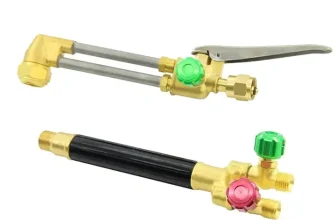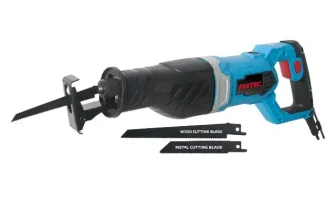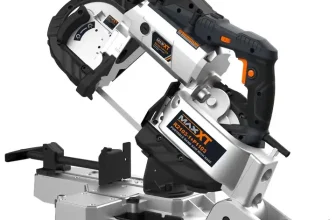A CNC Burn Table, also known as a CNC cutting table, is a relatively unique piece of machinery in the world of manufacturing. As an essential piece of equipment in the manufacturing industry, the CNC Burn Table uses modern digital technology to cut or manipulate materials with extraordinary precision and accuracy. So, what is a CNC Burn Table? This piece of machinery blends the traditional concepts of cutting and craftsmanship with the world of computer coding to create an innovative, high-performance tool that optimizes the cutting process and elevates the overall manufacturing workflow. The CNC Burn Table’s ability to skillfully manage intricate design layouts with simplified automated controls has earned it a significant place in diverse industries, from automotive and construction to aviation and more.
The significance of a CNC Burn Table in the manufacturing industry
The CNC Burn Table holds a critical spot in the modern manufacturing industry. In an era where precision, efficiency, and speed are paramount, this piece of equipment stands as a game-changer. Predominantly used for cutting and welding metals and other materials, a CNC Burn Table automates these processes, maintaining accuracy regardless of the complexity of design patterns.
Basic to heavy industries have embraced this technology, aiding in creating machine components, automobiles parts, construction materials and even aircraft components. Its capacity to handle a wide range of materials and designs makes it versatile and invaluable. Moreover, it reduces labor-intensive processes, subsequently decreasing the time taken to produce high-quality outputs. Overall, the introduction and adoption of the CNC Burn Table in the manufacturing circles have considerably upped the production game.
Understanding CNC
Definition of Computer Numerical Control (CNC)
Computer Numerical Control (CNC) is a method used in the manufacturing sector that involves the use of computers to control machine tools. Rather than manual operation, CNC machines function through a series of coded instructions. These codes, which are in the form of a software program, direct the machine’s movements and functions. This program provides precise instructions for tasks such as cutting, grinding, or shaping materials. CNC machining is a subtraction process where raw material is removed to create the desired part or product. Through this technology, complex three-dimensional cutting tasks can be accomplished in a single set of prompts, thus ensuring consistency, efficiency, and high precision in manufacturing operations.
How CNC works
Computer Numerical Control (CNC) operates through a unique process that uses computers and specific software to control the movement of factory tools and machinery. This process begins with creating a design using Computer-Aided Design (CAD) or Computer-Aided Manufacturing (CAM) software.
The design is then converted into specific numeric codes by a postprocessor. These codes, known as G-codes, provide detailed instructions that direct the motion of the machine. Some of these instructions could be about the speed, feed rate, and coordination of the tool.
Once these codes are generated, they are sent to the CNC machine. The machine controller, essentially the brains of the machine, interprets these codes, making relevant moves to produce the final part. This can involve many specific actions like drilling holes, making precise cuts, or welding pieces together, all being performed automatically and with extreme accuracy.
Thus, it is the intricate dance between high-tech software and mechanical action, orchestrated by numeric codes, which forms the core of how CNC works.
Various types of CNC machines
Computer Numerical Control (CNC) technology comprises several types of machines enabling manufacturers to have a wide selection of tools to perfectly meet their production requirements.
One of the common types is the CNC Milling Machine. Used in various manufacturing industries, this machine can perform a numerous tasks such as drilling and turning. Its multi-axis version offers improved efficiency by making it possible to create more intricate shapes.
CNC Lathes are also a staple in the industry, primarily designed for producing detailed cylindrical or spherical parts. Through precision cutting, they ensure that the final product is perfectly symmetrical.
The CNC Router is another type known for its versatility. Mostly used in woodworking, they are utilized for cutting a variety of materials including MDF, plastics, foam, and non-ferrous metals.
Moreover, Plasma Cutters, also known as CNC Burn Tables, are used in industries requiring high precision in cutting metals. They use plasma torches controlled by CNC technology to cut intricate designs into metals with utmost precision.
Lastly, we have the CNC Electric Discharge Machines (EDMs). They work by creating sparks that melt a specific shape in a particular metal piece. Industries that require complex structures usually employ EDMs.
These are merely a few among the vast array of CNC machines available in the market today. Their invention has, without a doubt, revolutionized the manufacturing industry.
Exploring the CNC Burn Table
Detailed look at the structure of a CNC Burn Table
A CNC Burn Table is a sophisticated piece of machinery boasting a complex yet user-friendly structure. Its design generally consists of two primary components: the table and the burner.
The table part of the machine is fundamentally a large, flat surface designed to hold the workpiece in place. It’s often covered with a grid of slats, made from durable and heat-resistant materials, to support the metal or material being processed. The sturdy construction of these tables allows them to withstand substantial weights and endure the intense heat produced during the burning or cutting process.
On the other hand, we have the burner – the heart of this machine. It is mounted on a gantry that moves in multiple directions, enabling it to cut in both horizontal and vertical orientations. The type of burner can vary depending on the cut’s precision and the thickness of material required. Generally, this component houses a plasma or oxy-fuel cutter. Some advanced models even boast a dual capability, switching between plasma and oxy-fuel depending on the needs of the cut.
In the case of plasma cutters, they employ a high-velocity jet of ionized gas (plasma) to melt metal in its path. The oxy-fuel cutters, conversely, utilize a combination of pure oxygen and fuel gas to create a highly localized and controlled flame, capable of slicing through thick metal.
The intricate mechanics of these tools are all controlled by a CNC or Computer Numerical Control. The software sends commands to motors, telling them when, where, and how to move. More advanced machines may also possess additional elements such as a cooling system for the cutting torch, extraction systems for fumes and dust, and height control features for maintaining optimal cutting distance.
Role and function of a CNC Burn Table
The central role of a CNC Burn Table is undeniably its utility in diverse cutting processes. Often used in metal fabrication, it is designed to cut through solid steel sheets with impeccable precision, owing to precisely programmed instructions. The intricate details achieved with CNC Burn Tables are almost impossible with manual processes. Generally, a CNC Burn Table utilizes plasma or oxy-fuel burning techniques, both of which can efficiently slice through metal.
The operation begins with digitized designs which are then interpreted by the machine. The machine proceeds to turn these designs into real-life cuts on the metal sheet. In most cases, the design is a 2D representation of the final product which the CNC Burn Table meticulously reproduces on the chosen material. The fundamental function of a CNC Burn Table includes intricate metal cutting tasks; however, it doesn’t exclude its utilization in various welding processes.
These tables can play a role in positioning metal pieces for successful welding. They can also accommodate different kinds of welding equipment depending on the tasks at hand, demonstrating their versatility beyond the standard cutting operations. So, whether you’re fabricating pieces for automotive usage, or crafting customized signs, a CNC Burn Table is instrumental in executing diverse projects.
All these roles and functions of CNC Burn Tables ultimately contribute towards more precision, efficiency, and flexibility in design. This makes them a valuable asset in a multitude of industries that rely heavily on metal processing tasks, a topic that will be delved into more in the subsequent portions of this article.
Advantages of using a CNC Burn Table
CNC Burn Tables are renowned for their numerous advantages that have revolutionized the manufacturing sector. The primary advantage lies in the precision and accuracy of these machines. Unlike manual processes, CNC Burn Tables eliminate human error and deliver perfectly accurate cuts every time. This ensures the manufacturing of parts with the highest quality, thereby leading to overall improved product performance.
Secondly, CNC Burn Tables enhance efficiency and speed in production. These tables can operate continuously for 24 hours, handling large volume projects effortlessly and effectively. Reducing production time significantly, CNC Burn Tables offer the capability to manufacture complex designs faster and more efficiently.
Lastly, the flexibility offered by CNC Burn Tables is extraordinary. The software used enables the modification of designs without disrupting the manufacturing process. It allows the accommodation of new designs swiftly, thereby aiding in quick transitioning between different projects. The software-guided nature also enables the manufacturing of highly complex and intricate designs which would be nearly impossible in traditional manual processes.
In essence, the advantages of CNC Burn Tables make these systems indispensable in ensuring high-quality, rapid, and flexible manufacturing processes.
CNC Burn Table in Various Industries
Use of a CNC Burn Table in the automotive industry
The automotive industry, known for its mass production capabilities and precision requirements, greatly benefits from the use of CNC burn tables. The manufacture of vehicles requires the processing of numerous metal parts, many of which need to be cut to precise specifications. CNC burn tables have proved to be an instrumental tool in this process.
For instance, body parts such as doors, hoods, and trunk lids are often cut from large sheets of metal using CNC burn tables, ensuring perfect dimensions every time. The tables also assist in creating complex cuts for parts like engine components, frames, and exhaust systems.
Moreover, CNC burn tables speed up the manufacturing process. Traditional cutting methods often require individual setup for each cut, while a CNC burn table can perform multiple operations simultaneously without manual intervention, reducing production time significantly.
Finally, a distinctive feature of the automotive industry is its constant evolution and the continual introduction of new models. CNC burn tables permit quick and easy adjustments to be made to the design specs. This flexibility makes them invaluable when new vehicle models are introduced and alterations in design are required.
Overall, CNC burn tables play a pivotal role in the automotive industry by ensuring precision, accelerating production times, and providing the flexibility to adapt to evolving designs. Their use results in efficient operations and high-quality manufacturing in the automotive world.
Use in the construction industry
The CNC burn table has become an integral part of the construction industry, offering unmatched capabilities that streamline and improve manufacturing processes. Construction companies utilize this technology to efficiently cut a variety of durable materials including steel plates and reinforced beams, which are primary components in building infrastructures like bridges, skyscrapers, and commercial buildings.
One significant use in the industry is the production of structural frames. The precision and versatility of a CNC burn table allows it to handle complex cutting tasks, producing precise cuts required for the structural steel elements of buildings. Similarly, it’s used in creating construction equipment such as cranes, bulldozers and excavators, where precision-cut metal parts are integral for effective operation.
In terms of safety, this tool ensures construction companies can maintain high safety standards. The CNC burn table not only manages intricate cutting, but its automated process reduces human interaction with sharp edges and potential cutting hazards, decreasing the risk of workplace injuries.
Moreover, the high speed of the CNC burn table allows construction companies to expedite production schedules. Rapid production and precise cutting directly contribute to a reduction in resource waste, contributing to a more sustainable construction industry.
In summary, the construction industry has found great usage for the CNC burn table. It has become an essential tool for precision, safety, efficiency, and sustainability. Its use in this field illustrates the potential of modern technology to enhance and revolutionize various traditional industries.
Use in the aviation industry
The aviation industry greatly benefits from the use of CNC Burn Tables. Fabrication of aircraft parts and components like wings, body parts, engine components and landing gear all utilize this advanced technology. The high precision and accuracy these Burn Tables offer are critical in ensuring the safety and reliability of the aircrafts being constructed. Tolerances in this industry are extremely tight, given the life and death nature of aviation safety.
Moreover, the ability of a CNC Burn Table to handle different types of metals, including strong alloys frequently used in the aerospace industry, is invaluable. Its flexibility in design accommodates the complex and often intricate designs of aircraft parts.
In large-scale production, efficiency and speed are of utmost importance. The use of CNC Burn Tables enhances productivity by significantly reducing production time. It allows for continuous operations and reduces the need for manual handling, therefore minimizing human error and increasing overall production efficiency. In an industry where both quality and quantity of production are non-negotiable, the integration of CNC burn tables in the manufacturing processes has undoubtedly marked a significant improvement.
Finally, the aviation industry requires a high degree of customizability for each aircraft model. The CNC Burn Table caters to this need by facilitating the fabrication of tailor-made, one-off pieces, and complex parts- all with a high degree of precision and repeatability.
As such, the CNC Burn Table has proven to be an indispensable tool in the aviation industry, promoting safety, quality, and efficiency in aircraft manufacturing.
Other industries that benefit from a CNC Burn Table
Beyond the automotive, construction, and aviation industries, the versatility of CNC Burn Tables has made them instrumental in various other sectors. For instance, in the shipbuilding industry, these machines are often used to precisely cut large, flat parts while reducing overall waste. It streamlines the process, creating higher quality vessels and saving time on manual labor, thus significantly improving production efficiency.
In the military and defense industry, too, CNC Burn Tables play a crucial role. Here, they aid in the production of precise and complex components, which are critical when building military-grade equipment.
The energy sector, including oil and gas, solar, and wind, also relies on the unmatched accuracy of CNC Burn Tables. They are used to fabricate components for various equipment used in energy production such as casting molds, turbine parts, oil rig equipment, and more.
Artists, particularly metal sculptors, also use CNC Burn Tables to create stunning pieces of artwork with intricate details. It allows for heightened precision and the ability to execute complex designs which might be very difficult or even impossible if done manually.
In yet another demonstration of its versatility, the CNC Burn Table has found relevance in the fabrication of components used in space missions, satellites, and other aerospace applications. The precision and reliability of the burn table are crucial in these areas where there is no room for error.
To sum it up, the spectrum of industries that benefit from CNC Burn Tables is as vast as it is diverse.
Steps in Operating a CNC Burn Table
Process from design to product
Operating a CNC Burn Table involves a systematic and detailed process that begins with design and ends with a finished product. The first stage is design, where engineers or designers use CAD software to create a detailed 3D model of the end product. Every aspect of the design is broken down, including its dimensions, shape, and the specifics of the cuts to be made.
Following the design phase, this CAD file is then converted into a special CNC language, known as G-code. This G-code essentially serves as instructions for the CNC Burn Table, dictating every movement the machine needs to make in order to cut the design.
Once the G-code is prepared, it’s loaded into the CNC Burn Table. Before starting cutting, the material — often a sheet of metal — is positioned on the table and secured to prevent movement during the cutting process.
Next, the cutting phase initiates, where the CNC Burn Table follows the pre-set G-code instructions. The machine’s cutting torch moves across the surface of the material, cutting it precisely as dictated by the design.
After the cutting process, the metal undergoes a clean-up period where any remaining debris or rough edges are eliminated to finish the product. The final step is a thorough inspection to ensure the finished product matches the initial design plans exactly and meets the quality standards set.
Thus, the process moves seamlessly from design to product, with each step meticulously managed to ensure precision and quality in the finished product. This entire process is driven by sophisticated software and makes the CNC Burn Table a central piece of machinery in many manufacturing industries.
Safety measures when operating a CNC burn table
Operating a CNC Burn Table, while advantageous for many mechanical procedures, requires responsible handling and stringent safety measures to avoid accidents. Working with machinery that uses high temperatures for operations, these safety precautions become paramount.
Firstly, wearing personal protective equipment (PPE) is essential. This may include safety goggles, flame-resistant gloves, and aprons to protect against sparks, metal debris and heat. It’s also advisable to always wear a helmet with a protective face shield that has a proper filter to protect the eyes from the intense light generated by the burning process.
Secondly, proper ventilation is crucial when operating a CNC burn table. Cutting and welding metal can produce harmful fumes and gases that can be hazardous to health. Therefore, it’s crucial to ensure the workspace is properly ventilated or that a fume extraction system is in place.
Next, ensuring the appropriate handling of flammable materials is vital. Operators should be aware of the location and proximity of all flammable substances, to prevent accidental ignition from sparks or heat.
Additionally, regular maintenance should not be neglected. Machines should be frequently inspected for signs of wear or damage, and serviced regularly to keep them in optimum condition. A poorly maintained machine can potentially lead to accidents.
Lastly, training is key. Operators must be adequately trained not only to use the CNC burn table correctly, but also to understand the potential risks and know how to react in the case of an emergency. It implies understanding proper shutdown processes, knowing the locations of emergency stops, and understanding fire safety protocols.
Adhering to these safety measures when operating a CNC burn table reduces risk, ensuring a safer and more productive work environment.
Future trends in CNC Burn Table Technology
Predicted advancements
As we look ahead, considerable advancements in CNC Burn Table technology can be anticipated. One of the most significant is likely to be the integration of artificial intelligence (AI) and machine learning algorithms into CNC systems. These technologies can potentially improve predictive maintenance, quality control, and even optimize the cutting process in real-time.
The development of more sophisticated simulation software also promises to further advance CNC Burn Table technology. It’s predicted that virtual representations of the manufacturing process will become increasingly accurate, allowing operators to experiment with different settings and identify potential problems before the actual cutting begins.
Another important advancement is the expected rise in automation and robotics. Future CNC Burn Tables will likely have more automated features like self-calibration and advanced error detection, minimizing human intervention and making processes much more efficient.
Finally, expect to see more energy-efficient burn tables hitting the market. This not only reduces operational costs but also lessens the environmental impact of manufacturing operations – a key concern in today’s business climate. With these potential advancements ahead, the future of CNC Burn Table technology certainly looks exciting and promising.
Impact on manufacturing processes and productivity
The impact of future trends in CNC Burn Table Technology on manufacturing processes and productivity is projected to be significant. As automation and precision become even more critical in today’s fast-paced industry, these advancements are expected to further streamline operations, reduce labor costs, and increase overall efficiency.
Adoption of artificial intelligence and machine learning in CNC Burn Tables may augment the automation process. With sophisticated algorithms and predictive analysis, machines could possibly self-diagnose wear and tear, carrying out maintenance and repairs without human intervention. This predictive maintenance could further increase productivity by reducing unplanned downtimes.
In terms of operational precision, advancements are expected to improve the burn table’s cutting accuracy even further, reducing material waste and ensuring that every piece is cut to the exact dimensions. This level of precision could prove to be crucial in industries where tolerances are particularly tight, such as the aerospace and defense sectors.
There’s also an anticipated shift towards more energy-efficient and environmentally friendly burn tables. Technological advancements could lead to machines that consume less power and produce less waste, reducing a company’s carbon footprint and potentially saving costs in the long run.
Real-time data analysis is another potential trend on the horizon. With the ability to analyze performance data in real-time, manufacturers may be able to make on-the-spot adjustments to improve the machine’s efficiency while reducing operational bottlenecks.
On a broader scale, the constant evolution of CNC Burn Table technology could have impactful implications for the manufacturing industry as a whole. By enhancing productivity, accuracy, and efficiency, these advancements may be the key to staying competitive in an ever-evolving global market.
Conclusion
Brief recap of the importance and function of a CNC Burn Table
In our journey through the world of CNC burn tables, we have seen the pivotal role these technological marvels play in the modern manufacturing industry. As a crucial tool in metalworking, these machines offer unparalleled precision and speed, revolutionizing an array of industries from automotive to aviation.
Their defining capability is their computerized control, which not only ensures pinpoint accuracy but flexibly maneuvers design changes. By marrying the skill of software with the power of machinery, a CNC burn table streamlines operations like cutting and welding, significantly enhancing industry productivity.
Embracing such advancements is not merely keeping up with the times; it is about shaping the future. As we peer into the horizon of manufacturing and construction, the presence of CNC burn table technology is unmistakable, offering a glimpse into a world of automated precision and seamless design execution.
Final thoughts on the role of CNC Burn Tables in enhancing industrial processes.
CNC Burn Tables are undeniably transformative assets in the realm of industrial manufacturing. They are the benchmark for accuracy, efficiency, and flexibility in design, playing a pivotal role in enhancing productivity across multiple sectors – from automobile and construction to aviation and beyond.
The integration of CNC Burn Table technology within an industry’s production process represents a keen vision for the future. It’s an embracing of automation and precision that inevitably leads to improved product quality, expanded creative possibilities, and significant time and cost savings.
As we look towards the future, it’s clear that the role of CNC Burn Tables will only expand and evolve. Thus, industries should continuously invest in leveraging this innovative technology to maintain competitiveness and enhance their manufacturing processes further. Their adoption and proficient use might well be the defining line between remaining on the industry’s leading edge and falling behind in the future.
In essence, CNC Burn Tables provide more than just a mechanized means to an end; they offer the tools for industries to realize their potential in a rapidly digitalizing world. So, the final thought we’d like to leave you with is this – in a realm where precision, efficiency, and design flexibility are paramount, the CNC Burn Tables are indeed modern-day industrial magic.







